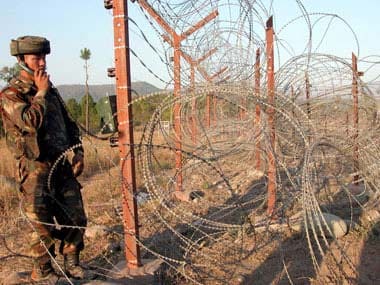The Kashmir dispute, four resulting wars, cross-border terrorism, and the threat of nuclear escalation have continued to define India-Pakistan relations. [caption id=“attachment_4311993” align=“alignleft” width=“380”]  Representational image. Reuters[/caption] This relationship is best conceptualised by the Stability-Instability Paradox, where stability in the nuclear realm exists due to the military strategy of mutual assured destruction, but which opens up massive scope for disruption via sub-conventional conflict (see the past three decades of history in Kashmir). Indian administrations, over this period — when cross-border terrorism in Kashmir and the discovery of covert nuclearisation escalated tensions on an existential scale — have more or less adjusted to functioning in this paradox. Yet, New Delhi has been constantly searching for a response to this sub-conventional conflict from Pakistan, which would allow it to achieve the dual goal of deterring Rawalpindi, and simultaneously not inviting a nuclear attack. In the aftermath of the 2001 Parliament attack, the ruling NDA attempted to pressurise Pakistan with the “ Cold Start” doctrine (which was not declared officially) but was deterred by Pakistan’s frequent nuclear threats. Pakistan’s introduction of tactical nuclear weapons was specifically aimed at deterring Indian forces’ attempts at shallow thrusts and territorial grabs under Cold Start. More than a decade later, the Bharatiya Janata Party, in its 2014 election manifesto raised eyebrows when it mentioned that nuclear doctrine would be reviewed, something Prime Minister Narendra Modi denied. The then defence minister Manohar Parrikar talked of imbuing the Indian nuclear doctrine with more ambiguity, which was followed by professor Vipin Narang’s statement on India’s move consisting of “full comprehensive counter-force strike”, attempting to “completely disarm Pakistan of its nuclear weapons”. While there is clarity on “No First Use” and the second strikes — much has been written about it — the debate continues on the Indian response to large scale sub-conventional strikes. There are multiple opinions on whether punitive retaliation across the border in response to a terrorist attack would invite a tactical nuclear strike. From the air force base at Pathankot to the army bases in Uri and Nagrota, 2016 saw many lethal attacks on the Indian forces. India responded by conducting surgical strikes at multiple locations across the Line of Control (LoC). While such strikes across the LoC are not new and have been reported, the decision to go public was aimed at sending a message: Asymmetrical warfare would engender a response. However, as cross-border infiltration and attacks on the army and the paramilitary forces continued, the efficacy of surgical strikes was questioned. This is because surgical strikes were still seen in a limited binary context and their failure to stop infiltration was interpreted as failure. The narrative post-surgical strikes was not primarily aimed at stopping asymmetric warfare — which wasn’t under Indian control anyway — but a strategic shift in the way New Delhi dealt with these threats. The passive approach of combating infiltrators once they crossed over appears to be at an end. This is something that Indian Army chief General Bipin Rawat stated during a recent press conference before Army Day. Rawat referred to these non-state actors as “disposable commodities” of unlimited supply, which meant the new strategy encompassed a broader strategic framework of deterring Pakistan, and not limiting itself to eliminating terrorists. The philosophy behind the surgical strikes and a deliberately tense LoC is to make it costly for the Pakistanis to continue sub-conventional disruptions, compel them to carry out a cost-benefit analysis comparing its troop casualties, and infrastructure damage from Indian shelling to the benefits it derives from its policy of asymmetric warfare. In the same conference, Rawat admitted that ceasefire violations were part of the new counter-terrorism strategy. However, he clarified that only those Pakistani posts and bunkers were targeted which were believed to be launch pads for infiltrators. Interpreting these events according to New Delhi’s line of thinking, it seems that its long-pending quest to disturb the status quo is being hastened. The question that needs to be asked: Will the new approach further raise costs for Pakistan even as it continues to suffer civilian and military casualties? According to a recent PTI report, “The Indian Army killed 138 Pakistan Army personnel in 2017 in tactical operations… along the Line of Control (LoC) in Jammu and Kashmir… and… lost 28 soldiers during the same period along the LoC.” The Pakistani foreign office also claimed that Indian forces committed “more than 70 ceasefire violations along the LoC and Working Boundary” till 20 January. With these escalating costs, there are pressures on Pakistan but it is unlikely that such activities would halt, given the intensity of India-Pakistan rivalry. However, New Delhi’s strategic shift sends Rawalpindi the signal that adjusting to the new normal just got dearer. The author is a research associate with Vivekananda International Foundation, New Delhi.
The Kashmir dispute, four resulting wars, cross-border terrorism, and the threat of nuclear escalation have continued to define India-Pakistan relations.
Advertisement
End of Article


)

)
)
)
)
)
)
)
)



